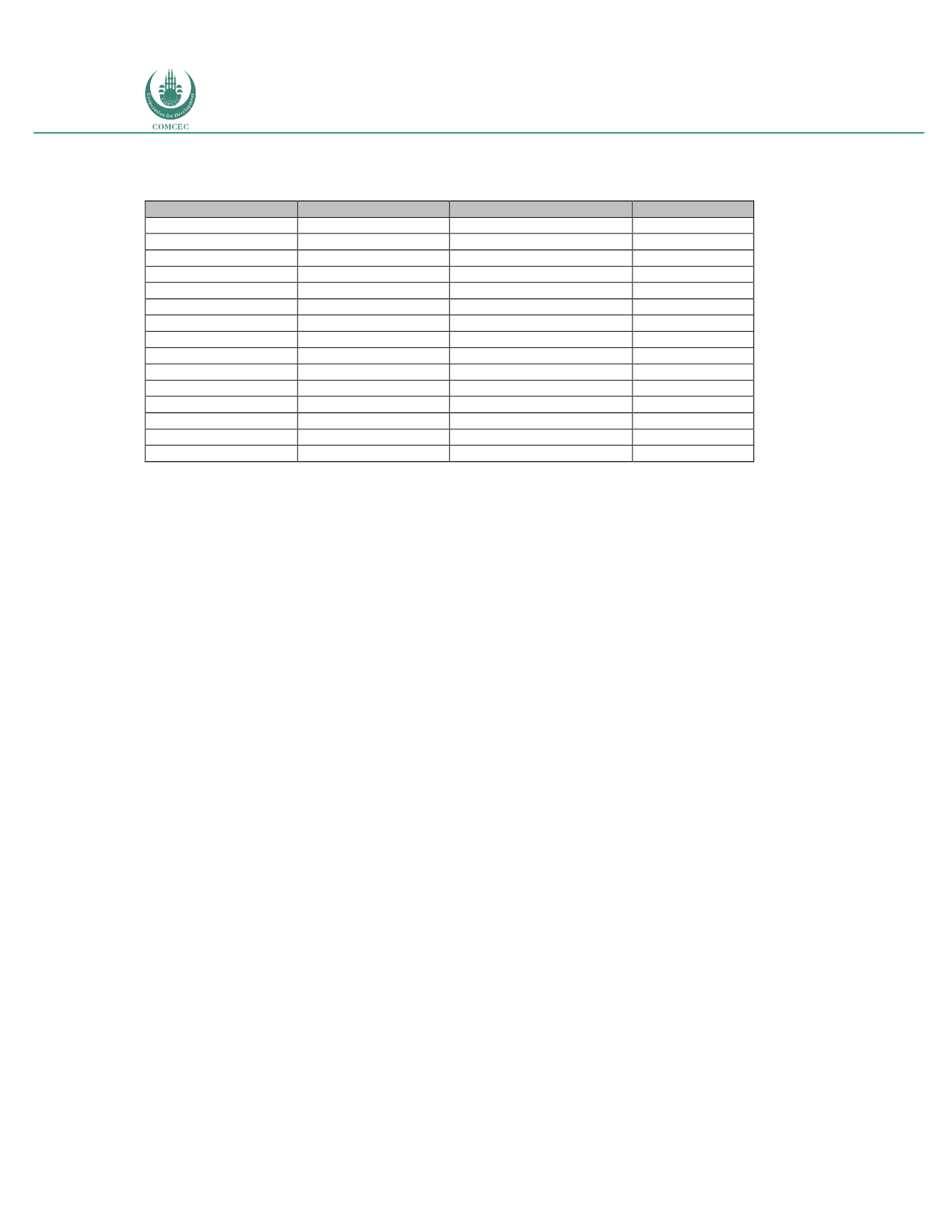

Increasing Broadband Internet Penetration
In the OIC Member Countries
52
Table 18: Percentage of households mentioning cultural relevance or lack of need as a
reason for not purchasing broadband
Country
Lack of need (%)
No cultural relevance (%)
Year
Brazil
47.00
5.80
2015
Mauritius
- - -
1.60
2015
South Africa
- - -
0.20
2015
Argentina
- - -
72.00
2015
Chile
36.10
- - -
2015
Colombia
49.00
- - -
2015
Guatemala
57.00
- - -
2015
Korea
1.30
- - -
2014
Mexico
51.00
- - -
2015
Nicaragua
31.00
- - -
2015
Panama
27.00
- - -
2015
Russia
20.50
- - -
2014
Singapore
5.80
- - -
2014
South Africa
18.60
- - -
2014
Switzerland
14.40
- - -
2014
Source: Compiled by Telecom Advisory Services
The lack of cultural relevance or “lack of need” barrier presents some complexity in terms of its
understanding. Two interpretation options are open. One option is that the consumer has
evaluated the offerings in terms of applications, services and content and has not found them
relevant to his or her needs. Under this premise, policy initiatives should be oriented towards
increasing the perceived value of broadband by expanding the range and utility of offerings
(these are called “demand pull” policies). The second option is that the consumer does not
have enough information to make a decision of adopting broadband.
In at least one study conducted in a developed country, the linguistic factor contributed to the
lack of relevance. That was identified in the United States among the Hispanic population that
had recently immigrated to the country. It is important to consider, however, that, as in the
United States, the linguistic barrier is strongly correlated with economic and educational
factors. Therefore, it is still difficult to tease out the socio-demographic variables in order to
isolate the linguistic factors. The language barrier has been identified in the emerging world as
well. For example, in Peru, only 8% of those individuals whose first language was not Spanish
are Internet users. That percentage increased to 40% amongst native Spanish-speakers.
Having reviewed the supply and demand barriers to increasing broadband penetration, it is
relevant to move to review some of the approaches taken to address them.
III.3. Main policy, regulatory approaches and implementation for increasing
broadband penetration
Governments and private broadband service providers have recognized the presence of
barriers to increasing broadband penetration reviewed above. The following section presents
the underpinnings of regulatory and public policy initiatives to tackle the broadband
penetration gap. Additionally, some best practices developed in the course of program
implementation will be presented and selected efforts implemented in developed countries
will be analyzed.
















